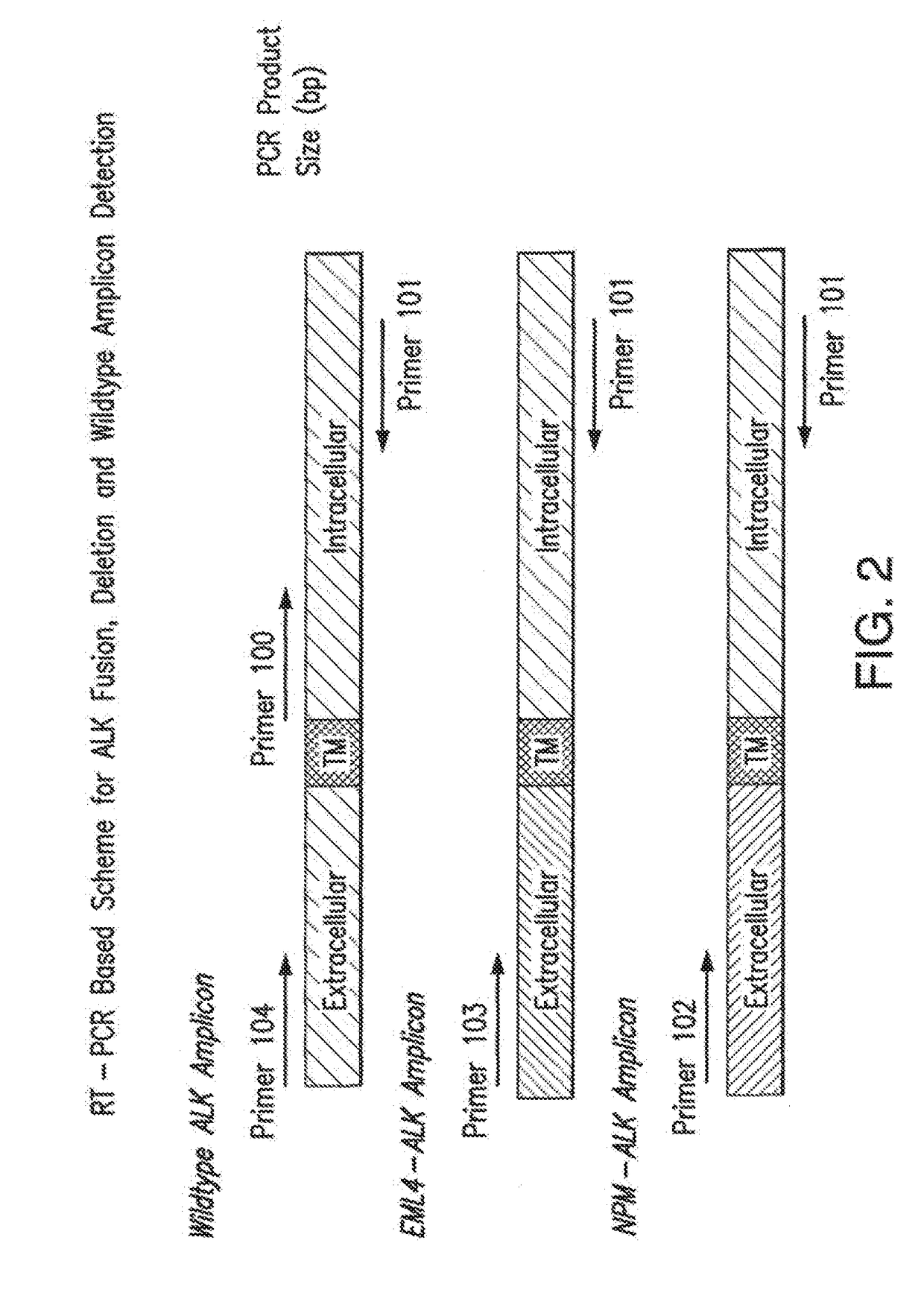Methods and compositions relating to fusions of alk for diagnosing and treating cancer
a cancer and alk technology, applied in the field of methods, can solve the problems of poor patient outcomes of many of these malignancies, and achieve the effects of rapid and sensitive detection, assessing susceptibility or risk, and determining susceptibility or resistan
- Summary
- Abstract
- Description
- Claims
- Application Information
AI Technical Summary
Benefits of technology
Problems solved by technology
Method used
Image
Examples
examples
[0181]The following examples are put forth so as to provide those of ordinary skill in the art with a complete disclosure and description of how the compounds, compositions, articles, devices and / or methods claimed herein are made and evaluated, and are intended to be purely exemplary and are not intended to limit the disclosure. Efforts have been made to ensure accuracy with respect to numbers (e.g., amounts, temperature, etc.), but some errors and deviations should be accounted for. Unless indicated otherwise, parts are parts by weight, temperature is in ° C. or is at ambient temperature, and pressure is at or near atmospheric.
A. Example 1: ALK Fusion Genes in Hematological Malignancies and Solid Tumors (Anaplastic Large-Cell Lymphoma, ALK+Diffuse Large B-Cell Lymphoma, ALK+ Systemic Histiocytosis, IMT Sarcoma, Non-Small Cell Lung Carcinoma, Esophageal Squamous Cell Carcinoma, Breast Cancer, Colorectal Carcinoma)
[0182]Although the point mutations of ALK occur in neuroblastoma, so-...
example 2
B. Template Exchange Extension Reaction (TEER)
[0183]Template Exchange Extension Reaction (TEER) refers to a class of methods that can compare an unknown or unsequenced nucleic acid template to a sequenced template to determine if they are identical. It is based on the fact that sequencing products are unique to the template from which they are generated. The disclosed methods and compositions involve particular forms of TEER.
[0184]Originally the template exchange extension reaction (TEER) was developed to detect unknown germline and somatic mutations present in a homozygous or heterozygous state. This was demonstrated by polyacrylamide gel electrophoresis followed by chemiluminescent detection. The process was converted to a microtiter based detection format. In a microtiter plate format, it has much higher throughput and can be used to quickly screen DNA for mutations prior to DNA sequencing. As a sequence scanning method, it is useful in screening large sample populations where t...
PUM
| Property | Measurement | Unit |
|---|---|---|
| sizes | aaaaa | aaaaa |
| diameter | aaaaa | aaaaa |
| Tm | aaaaa | aaaaa |
Abstract
Description
Claims
Application Information
 Login to View More
Login to View More - R&D
- Intellectual Property
- Life Sciences
- Materials
- Tech Scout
- Unparalleled Data Quality
- Higher Quality Content
- 60% Fewer Hallucinations
Browse by: Latest US Patents, China's latest patents, Technical Efficacy Thesaurus, Application Domain, Technology Topic, Popular Technical Reports.
© 2025 PatSnap. All rights reserved.Legal|Privacy policy|Modern Slavery Act Transparency Statement|Sitemap|About US| Contact US: help@patsnap.com



